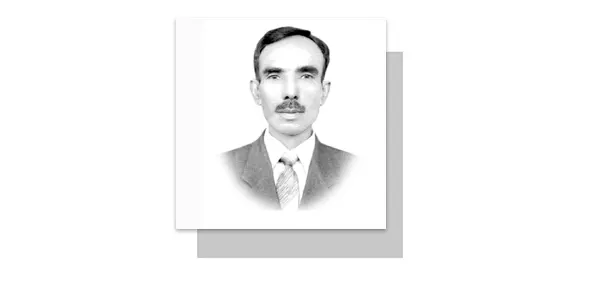INDIA’S brutal ‘Operation Blue Star’ was the military operation which occurred between 3–8 June 1984, ordered by the then Prime Minister Indira Gandhi to get control over the Golden Temple complex (Harmandir Sahid), the holiest shrine of the Sikhs in Amritsar, Punjab, and to arrest Sikhs’ spiritual leader Jarnail Singh Bhindranwale, including his followers from Bhindranwale had earlier taken residence in the Harmandir Sahib. He was the only leader who had boldly been fighting for the genuine rights of the Sikhs. The Indian Army led by General Kuldip Singh Brar, supported by troops and armoured vehicles, broke all records of state terrorism and extrajudicial killings through that barbaric operation. In those days, the majority of the Sikhs were coming to the temple complex to celebrate the Martyr Day of Guru Arjun Dev. The Indian forces destroyed the Akaal Takht Sahib which is right in front of the Harmandir Sahib. On June 6, when all Sikh fighters were martyred along with Jarnail Singh Bhindranwale, Indian troops entered the temple complex with their shoes, deliberately ignoring the holiness of the place. When the Indian Army felt that only 251 men had prevented them from entering the Golden Temple for so many days, they started killing innocent Sikhs who had come there to visit the temple. The only purpose was to hide their humiliation.
In this regard, in their book: “The Sikh Struggle, Ramnarain Kumar and George Sieberer write: “The army killed every Sikh who could be found inside the temple-complex. They were hauled out of rooms, brought to corridors on the circumference of the temple and with their hands tied behind their back, were shot in cold blood. Among the victims were many old men, women and children….all visitors were locked up in rooms for two days without any food, water, or electricity and were starved to death. Besides, the Harmandir Sahib remained under the army control for many months.”
The brutality of the ‘Operation Blue Star’ was not confined to the Harmandir Sahib. Indian armed forces simultaneously attacked 40 other historic gurdwaras all over East Punjab. When Sikhs in other states came to know about the desecration of the Golden Temple and the massacre of their brethren, they quickly left for Punjab. Before they could reach Punjab, many Sikhs were murdered on the way. According to an estimate, about 50,000 Sikhs were killed within a few days. The whole of Amritsar city was sealed and was burnt. A number of tourists either were murdered or arrested. Shops belonging to Sikhs were looted and their houses were set ablaze by Hindu mobs. In most of the cases, Sikh women were molested and some persons of their community were also burnt. Besides, historical Sikh artifacts as well as all the literature written by the gurus were also set ablaze by the Indian army. In the same year of November, two dedicated Sikhs named Beant Singh and Satwant Singh, policemen who were posted at Prime Minister Indira Gandhi’s residence, assassinated her. Then Hindu riots erupted in the capital and other cities in which more than 15,000 Sikhs were murdered, while police watched silently so as to provide the Hindus with a free hand to massacre Sikhs. After the ‘Operation Blue Star’, the Sikhs’ struggle for independence continued, but the Indian government made every effort to crush it with the state machinery. To maintain its control over the Harmandir Sahib, another attack was launched on the Temple in 1987, called ‘Operation Black Thunder’.
This time only Sikh resistancewas the main target. Several people of Sikhcommunity were killed and dead bodies lay inside the sacred place for many days. A report disclosed that many trucks were loaded with dead bodies and all were burned with kerosene oil. Afterwards, ‘Operation Woodrose’ and ‘Operation Black Thunder-II’ were conducted against the Sikhs, which also assassinated them extrajudicially. After these barbaric operations, many Sikhs left India to escape further genocide. Sikhs have spread out all over the world to keep the movement of Khalistan alive.
After the brutal operation Blue Star, the international community had thought that perhaps Sikhs have become lethargic regarding their demand for an independent state-Khalistan.But, participation of almost 208,000 Sikhs in the Khalistan referendums held in the recent years in four western countries—the huge number of Sikhs who voted in favour of an independent Khalistan reflected that their demand is gradually being accepted globally. On March 18, 2023, prior to the launching of crackdown by the Indian police and paramilitary forces, section-144 was imposed, and mobile phone service was suspended in Sri Muktsar Sahib and Fazilka districts of the Indian Punjab.Police arrested a large number of Sikhs including members of ‘Waris Punjab De’ and its leaderAmritpal Singh. Sikh freedom followers, their various organizations, especiallythe World Sikh Organization of Canada (WSO)as well as their leaders condemned the security operations—expressed serious concerns over the crackdown, an internet blackout throughout the state of Punjab—draconian measures, extrajudicial killings,harassment of the Sikh population, suspension of civil liberties and arrest of Sikh leader, BhaiAmritpal Singh. Nonetheless, the Sikhs are fighting for a separate homeland since 1947, but the movement gained impetus by the efforts of SantJarnail Singh Bhindranwale who was killed by Indian Army in 1984.
—The writer is contributing columnist, based in Lahore.










